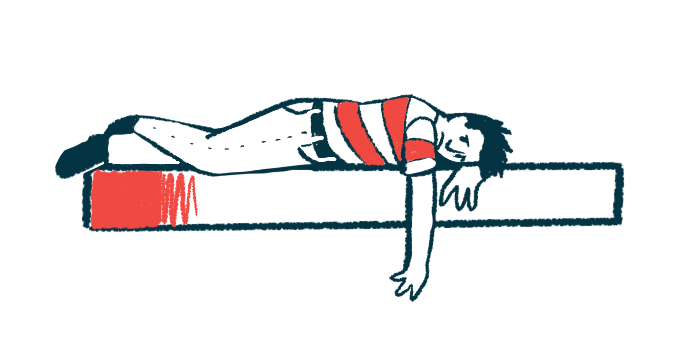Depression, anxiety, sleep problems prevalent in NMOSD: Review study
Findings underscore need for regular monitoring, prevention efforts

As many as half of people with neuromyelitis optica spectrum disorder (NMOSD) experience depression, anxiety, and/or sleep problems, according to a new meta-analysis of published studies.
Moreover, these symptoms were more frequent among NMOSD patients than in the general population.
“There is a high prevalence of depression, anxiety, and sleep disturbances among NMOSD [patients],” the researchers wrote.
“These findings underscore the importance of regular monitoring of psychological status in NMOSD as well as the need for preventive approaches, early diagnosis, and intervention to improve medical and psychosocial outcomes,” the team wrote.
The review study, “The prevalence of depression, anxiety, and sleep disturbances in patients with neuromyelitis optica spectrum disorders (NMOSD): A systematic review and meta-analysis,” was published in the journal Multiple Sclerosis and Related Disorders.
Review study covered over 4,000 people with NMOSD
NMOSD is a progressive autoimmune disorder that affects the nervous system, leading to damaging inflammation in the spinal cord and the optic nerve, which relays signals between the eyes and the brain.
This neurological damage can lead to a wide range of disease-related symptoms, from eye pain and vision problems to muscle pain and weakness, loss of sensation, and breathing difficulties.
Previous research has shown that NMOSD patients have a worse health-related quality of life when compared with the general population. In addition, depression, anxiety, and sleep disturbances are key contributors to NMOSD burden.
However, the real prevalence of these factors in NMOSD patients is poorly characterized, with results varying across studies. Also, “these studies are constrained by small sample sizes and a limited number of geographic regions,” the researchers wrote.
To get a better understanding of how common these problems are among people with the autoimmune disease, scientists in China systematically reviewed studies published up to June 2022 reporting the frequency of these symptoms.
Of 166 studies evaluated for eligibility, 31 — covering 4,213 people with NMOSD — were included in the meta-analysis, which reviews pooled data from multiple published studies. Studies were published between 2013 and 2022, and included from 14 to 1,349 people.
Depression was assessed in 26 studies (3,780 patients), anxiety in eight studies (2,344 patients), and sleep disturbances in six studies (762 patients).
Sleep problems most common, followed by anxiety, then depression
The results showed that the pooled frequency of depression was 40%. Depression was mostly classified as moderate (about 20%) or mild (an estimated 15%); in all, slightly less than 10% of patients had severe depression.
The pooled prevalence of anxiety was 45% and of sleep problems 55%.
“As far as we know, [this] was the first meta-analysis [that] included a large sample size to estimate the pooled prevalence of depression, anxiety and sleep disturbances among NMOSD [patients], giving it sufficient statistical power,” the researchers wrote.
Overall, the analysis found a high prevalence of depression and anxiety, as well as sleep problems, among people with NMOSD. The findings represent “a substantial increase to that of the general population,” the team noted.
The following three major areas are meaningful to patients with NMOSD: prevention, early diagnosis of depression, anxiety and sleep disorders, and effective treatment of the same to limit its negative impact.
Subgroup analyses indicated that depression and anxiety rates varied across studies depending on the screening tools used and the study design. The region where the study was conducted also was a strong influencing factor of reported anxiety prevalence.
The rate of sleep disturbances was found to vary significantly across studies based on study region and number of patients included.
Given this high rate variability between studies, these “overall estimates must be interpreted with caution,” the researchers wrote.
Still, these findings indicate that “the following three major areas are meaningful to patients with NMOSD: prevention, early diagnosis of depression, anxiety and sleep disorders, and effective treatment of the same to limit its negative impact,” the team wrote.
According to the team, “this would likely involve a multipronged strategy including screening regularly and recognition of risk factors early such as a prior history of depression and poor social support, encouraging adaptive coping, mobilizing social support, and group/individual therapy as appropriate.”
“Our findings have implications for practice, policy, and research,” the researchers wrote.







